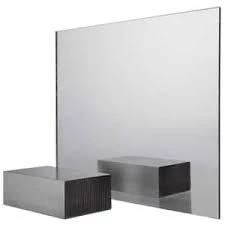

Understanding Float Glass Sheets A Comprehensive Overview
Float glass sheets, a fundamental product in the glass industry, have become an essential material, widely employed in various applications ranging from architectural design to automotive manufacturing. The production process of float glass, its properties, and its applications are critical to understanding its importance in today’s world.
What is Float Glass?
Float glass is a type of flat glass that is manufactured by the float process, which was first developed in the 1950s. This innovative technique involves floating molten glass on molten tin to create a smooth, uniform surface. The result is a high-quality sheet of glass that is free from imperfections such as bubbles and waves, making it ideal for numerous applications. The thickness of float glass sheets can vary significantly, typically ranging from 2 mm to 19 mm, though specialty sizes can also be produced.
The Manufacturing Process
The float glass manufacturing process begins with the melting of raw materials, which generally include silica sand, soda ash, and limestone. The mixture is heated to about 1,700 degrees Celsius in a furnace until it transforms into molten glass. Once melted, the glass is poured onto a bed of molten tin, where it spreads out evenly to create a flat surface. The tin provides a smooth finish, preventing contaminants from affecting the quality of the glass.
After flowing onto the tin bath, the glass sheets undergo a controlled cooling process known as annealing. This step is crucial as it relieves internal stresses within the glass, resulting in a stable and durable product. The final product is then cut into sheets of predetermined sizes, inspected for quality, and packaged for distribution.
Properties of Float Glass
Float glass sheets possess several properties that make them versatile and desirable in various uses. Primarily, they are known for their optical clarity, ensuring that they do not distort the view through the glass. Their smooth surface enhances light transmission, making them an excellent choice for windows and display cases.

In addition to optical properties, float glass is also notable for its strength and durability. While it provides better resistance to thermal stress compared to other glass types, it can still break under impact. Therefore, it is often treated or laminated for applications requiring enhanced strength and safety.
Float glass is also adaptable to different environmental conditions. It can be coated or tinted, providing options for energy efficiency and UV protection, making it suitable for a variety of climates and structures. Furthermore, it can be easily cut and processed, allowing for custom shapes and designs.
Applications of Float Glass Sheets
The applications of float glass sheets are extensive and varied. In architecture, they are predominantly used for windows, facades, and glass doors due to their aesthetic appeal and functionality. The construction industry values float glass for its ability to enhance natural light entry while maintaining transparency.
Automotive manufacturers rely on float glass for windshields and side windows, as its clarity and strength contribute to driver visibility and safety. Moreover, float glass finds applications in the electronics industry for screens, where high definition and durability are paramount.
In the realm of interior design, float glass is utilized in furniture, mirrors, and decorative elements, adding a touch of elegance and modernity to spaces. Additionally, with the rise of sustainable building practices, float glass is increasingly used in energy-efficient designs, contributing to the reduction of heat loss and energy consumption.
Conclusion
Float glass sheets represent a remarkable blend of beauty, functionality, and versatility, making them indispensable across various industries. Their unique production process, superior qualities, and wide-ranging applications ensure that float glass will remain a vital component of modern design and engineering. As technology continues to advance, the future of float glass production and usage will likely become even more innovative, further enhancing its role in our daily lives and the built environment.